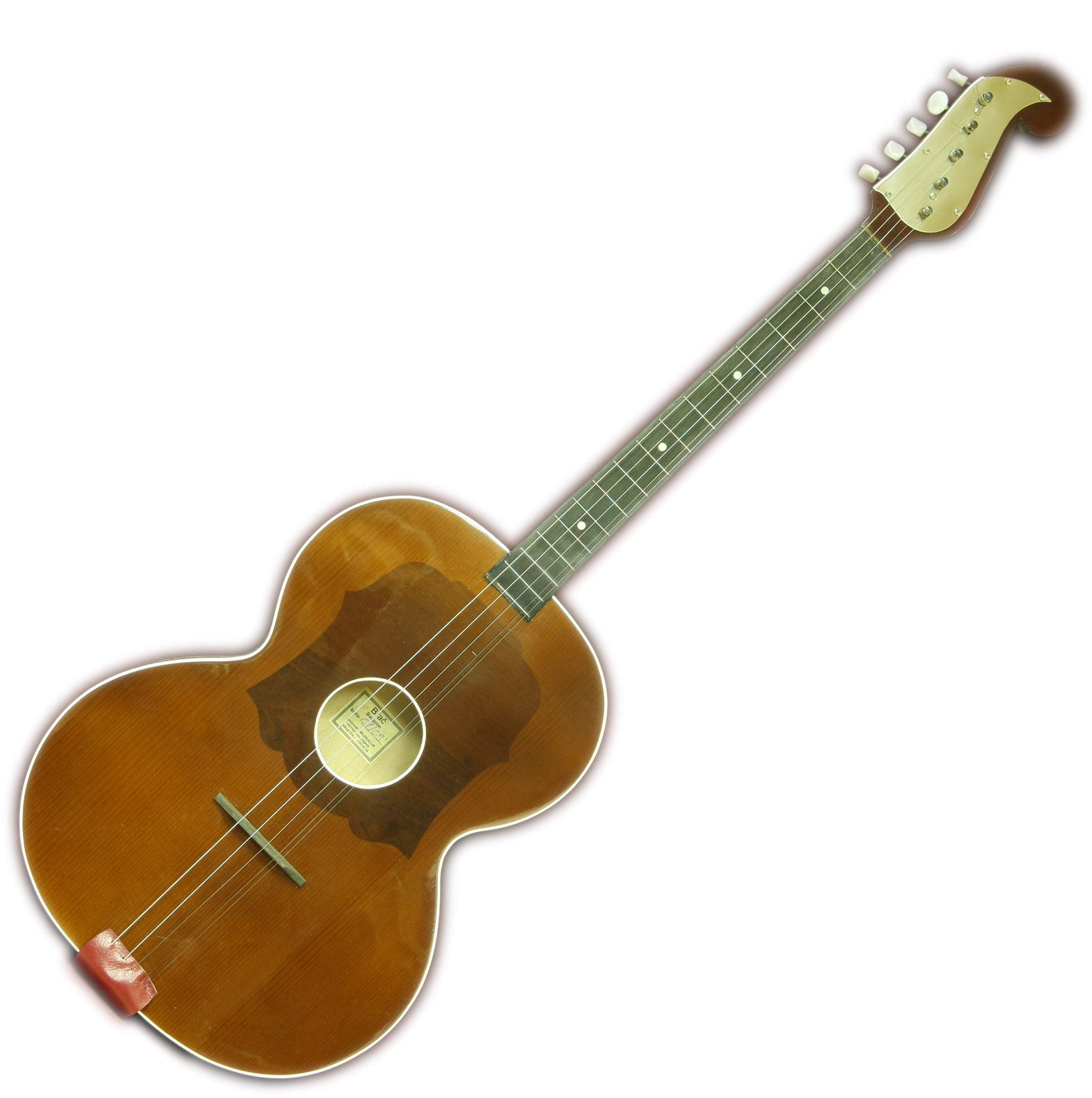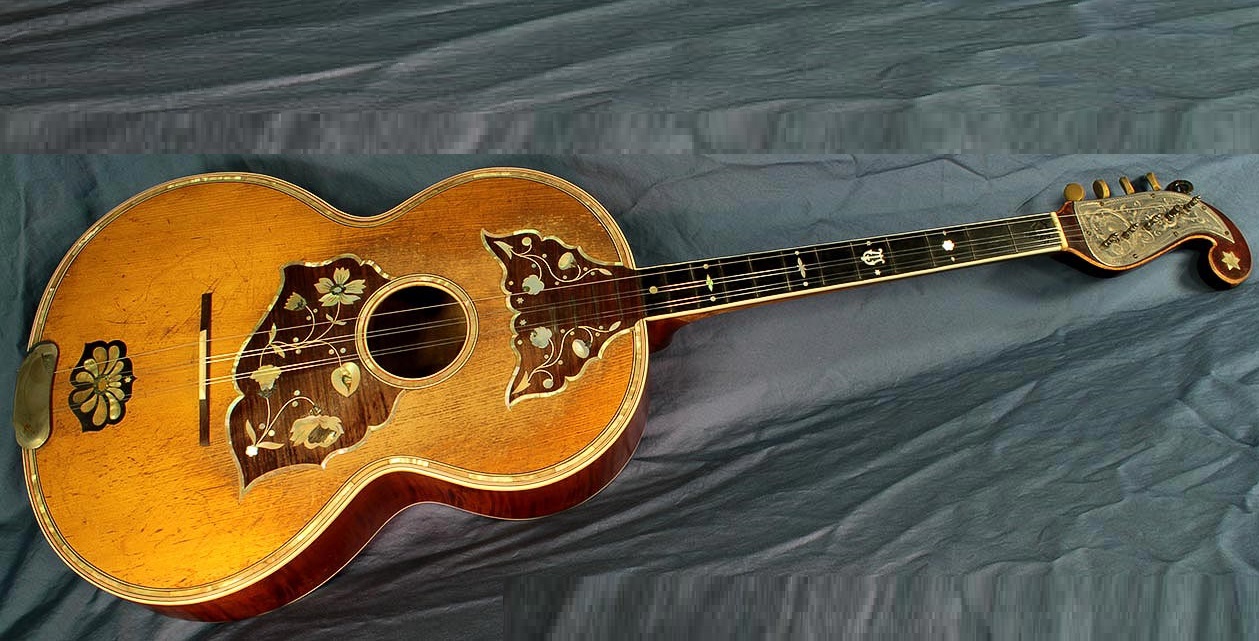Brac
Plucked Instruments
Europe
Between 1001 and 1900 AD
Video
The brac is a traditional stringed instrument commonly found in the folk music of the Balkans, particularly in Serbia, Croatia, and Bosnia and Herzegovina. It is a member of the tamburica family, a group of instruments used in traditional ensembles. The brac is known for its bright and resonant sound, contributing both melody and harmony to folk music arrangements. It has a pear-shaped or teardrop body with a long neck and is typically played with a plectrum. The instrument is used in tamburica orchestras and is valued for its versatility and ability to complement various musical styles.
It is a plucked string instrument belonging to the chordophone family. It is similar in construction to the mandolin and the bouzouki, with its sound being produced by vibrating strings stretched over a resonating body. The brac is most often tuned in intervals that allow for easy chordal accompaniment and melodic playing. As a melodic and harmonic instrument, it serves as a bridge between the higher-pitched tamburica instruments and the lower-pitched ones, providing a balanced sound in ensembles.
Historical Background
The brac traces its origins to Central and Southeastern Europe, particularly within the Balkans. It emerged in the 19th century as part of the broader tamburica tradition, which itself was influenced by earlier stringed instruments brought to the region through trade and migration. The tamburica family of instruments is believed to have been inspired by Middle Eastern and Turkish lutes, adapted over time to fit the musical styles of the region. The brac became a staple in folk ensembles, particularly in the Austro-Hungarian territories, and played a vital role in preserving and developing the musical traditions of the Balkans. Today, it remains a key instrument in folk and traditional music settings, while also finding applications in contemporary genres.
Construction and Design
The brac is typically constructed from a combination of hardwoods, such as maple, walnut, and spruce, to ensure durability and excellent tonal properties. The body of the instrument is either carved or assembled from multiple wooden pieces, forming a teardrop or pear shape. The top, or soundboard, is often made from spruce to enhance resonance. The neck is long and slender, with a fretted fingerboard that allows for precise note articulation. The brac is strung with metal strings, typically in double courses, and features a floating bridge that transmits vibrations to the soundboard. Its design allows for both rhythmic strumming and intricate melodic playing, making it a versatile instrument in various musical settings.
Types of Brac
Several variations of the brac exist, differing mainly in size and tuning. The most common types include:
Prim Brac: The smallest variant, used for melody playing, often tuned in higher registers.
Bas Prim: Slightly larger than the prim, it provides melodic support and harmony.
Brac (Standard): A mid-range instrument that balances melody and chordal accompaniment.
Celo Brac: A larger version used for rhythm and bass lines, filling out the harmonic texture of ensembles.
Each type of brac contributes to the overall sound of tamburica ensembles, creating a rich and layered musical experience.
Playing Techniques and Sound Modifications
The brac is played using a plectrum, which allows for precise articulation and dynamic control. Common playing techniques include:
Tremolo Picking: Rapid alternation of notes to create a sustained sound.
Strumming Patterns: Various rhythmic patterns used for accompaniment.
Fingerpicking: Occasionally used to produce a softer, more nuanced tone.
Slides and Vibrato: Techniques that add expressiveness to melodic lines.
Modern adaptations of the brac include amplified versions with pickups, allowing musicians to modify the sound using effects such as reverb and equalization. This has expanded its role in contemporary music genres, making it a versatile instrument beyond traditional folk settings.
Applications in Music
The brac is primarily used in folk music, particularly in tamburica ensembles where it plays both harmonic and melodic roles. It is a key instrument in Balkan traditional music, providing a distinctive sound that complements vocals and other instruments. In addition to folk settings, the brac has been incorporated into world music, jazz, and even modern pop and rock arrangements. Some contemporary musicians use it in fusion projects, blending traditional sounds with electronic and experimental music.
The brac holds deep cultural significance in the Balkans, representing national and regional identity through its music. It has been used for centuries in traditional celebrations, folk dances, and storytelling. Tamburica ensembles, in which the brac plays a vital role, have been an essential part of Balkan music festivals, social gatherings, and historical events. The instrument has also been a symbol of resistance and cultural pride, preserving folk traditions in times of political and social upheaval. Today, the brac continues to be celebrated in cultural festivals and is taught in music schools dedicated to traditional Balkan music.
Advantages and Disadvantages
The brac offers several advantages, including its bright and resonant tone, ease of playability, and cultural significance. Its versatility in ensemble settings makes it a valuable instrument for both traditional and modern music styles. However, there are also some challenges, such as limited Global Recognition outside of Balkan music, the brac is not widely known. Mastering tremolo and other techniques can be challenging. High-quality brac instruments may be difficult to find outside of Eastern Europe. Despite these challenges, the brac remains a cherished instrument in the Balkans and beyond, appreciated for its rich history and unique sound. Whether played in traditional settings or innovative fusion projects, it continues to be an integral part of musical heritage and artistic expression.
Notable Brac Players and Ensembles
Several musicians and ensembles have contributed to the popularity and preservation of the brac in Balkan music. Some notable figures include:
Jovan Jovičić, a master of tamburica music and an advocate for its global recognition. Duje Miljak, a Croatian musician known for his virtuosic brac playing. The Vojvodina Tamburica Orchestra, a renowned ensemble specializing in traditional and classical tamburica music.
Learning and Mastering the Brac
Basic Techniques for Beginners
Tuning the instrument properly to ensure correct pitch and tone. Practicing strumming and picking patterns to develop rhythm and control. Playing simple melodies before progressing to complex compositions.
Advanced Playing Styles
Experienced musicians often incorporate fast melodic runs and embellishments to enhance expressiveness. Chords and harmonic progressions to support vocalists and lead instruments. Orchestral arrangements, where the brac plays both lead and accompanying roles.
With the rise of digital learning, many aspiring musicians can study the brac through online tutorials, workshops, and music schools specializing in tamburica traditions.
FAQ
What materials are used to make the Brac?
The Brac is typically crafted from high-quality woods such as maple, spruce, and mahogany. The body is often made of maple for durability, while the soundboard is spruce to enhance resonance. The fretboard is usually constructed from rosewood or ebony for smooth playability.
How is the Brac played?
The Brac is played using a pick, producing a bright and percussive tone. Players use techniques such as strumming, plucking, and tremolo to create dynamic rhythms and melodies. It is commonly used in traditional Balkan folk music ensembles.
What are the advantages of playing the Brac?
The Brac offers a distinct, bright sound ideal for folk and traditional music. Its compact size makes it easy to handle, and its versatile playing techniques allow musicians to experiment with rhythms and harmonies. It is an essential instrument in tamburitza orchestras.
 Links
Links
References
Other Instrument
Categories



















